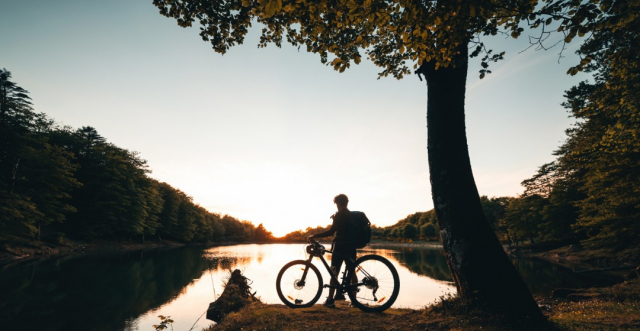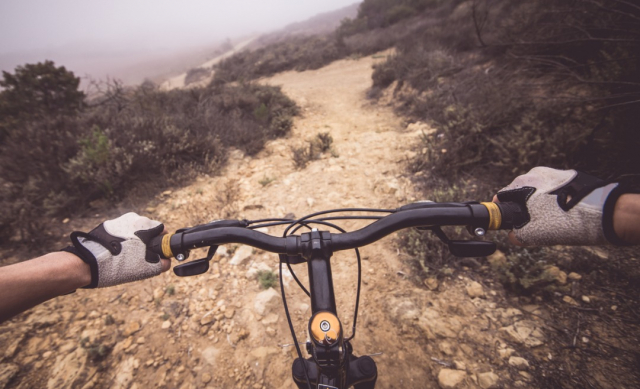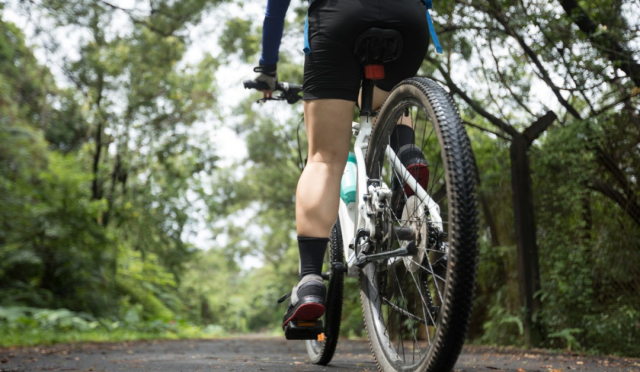Vía de la Plata en bici: Etapas y consejos
We tell you everything you need to know about this route, complete with its stages and the most useful tips.
The Vía de la Plata, also known as Ruta de la Plata, is one of the most popular cycling routes in Spain. With an extension of more than 800 kilometers, the route crosses a large part of the country, from Seville to Santiago de Compostela.
Following in the footsteps of an ancient Roman road, the Vía de la Plata offers cyclists the opportunity to enjoy stunning natural landscapes, Spain's rich history and culture, and the hospitality of its people. We are going to explore in detail what it means to cycle the Vía de la Plata, from the preparations to the experience itself and of course each and every one of the stages that make it up.
Stages of the Vía de la Plata
The Vía de la Plata is very popular with cyclists, especially those looking for a challenge. Next we will explore the different stages of the Ruta de la Plata by bike, from its beginning in Seville to its end in Santiago de Compostela.
We have proposed an itinerary that completes the Vía de la Plata in a total of 16 stages. More than 800 km ahead and in which despite the challenge you will be able to enjoy a great adventure.
All the stages of the Vía de la Plata by bicycle
- Stage 1. Seville - Castilblanco de los Arroyos (39km)
- Stage 2. Castilblanco de los Arroyos – Monesterio (63km)
- Stage 3. Monesterio – Zafra (45km)
- Stage 4. Zafra – Mérida (65km)
- Stage 5. Merida – Valdesalor (61km)
- Stage 6. Valdesalor – Cañaveral (55km)
- Stage 7. Cañaveral – Aldeanueva del Camino (78km)
- Stage 8. Aldeanueva del Camino – Fuenterroble de Salvatierra (43km)
- Stage 9. Fuenterroble de Salvatierra – Salamanca (51km)
- Stage 10. Salamanca – Zamora (66km)
- Stage 11. Zamora – Santa Marta de Tera (87km)
- Stage 12. Santa Marta de Tera – Puebla de Sanabria (67km)
- Stage 13. Puebla de Sanabria – A Gudiña (53km)
- Stage 14. A Gudiña – Xunqueira de Ambia (66km)
- Stage 15. Xunqueira de Ambia – Castro Dozón (64km)
- Stage 16. Castro Dozón – Santiago de Compostela (66km)
Tips for doing the Ruta de la Plata by bike
If you are thinking of touring the Vía de la Plata by bicycle, you have chosen one of the most emblematic and exciting routes; but also one of the demanding ones. With more than a thousand kilometers in length, this historic road that connects Seville with Santiago de Compostela offers a unique experience for lovers of cycling.
However, before starting your adventure on two wheels, it is important that you take into account some tips that will help you prepare properly and enjoy your trip to the fullest. Here you will find everything you need to know to make your experience unforgettable.
plan your route
Before you start your trip, make sure you have planned your route well. You can do this by using applications such as Google Maps or Wikiloc, where you can find useful information about the route and places of interest. It is also recommended that you have a Vía de la Plata guide with you.
prepare your bike
Make sure your bike is in good condition before you start your trip. Check the brakes, wheels, chain and gears. If you do not have experience in bicycle mechanics, it is recommended that you go to a specialized workshop to have your bicycle checked.
equip yourself properly
Don't forget to bring a helmet, comfortable cycling clothing, suitable footwear and sun protection. It is also advisable to bring a backpack or saddlebags to carry your belongings.
The importance of the time of year
The time of year is a very important decision. We must avoid the hot summer months at all costs and, if possible, the cold winter weeks as well. Spring and autumn are ideal to start our trip, with mild temperatures that will give us respite when we need a rest.
prepare yourself physically
The Vía de la Plata is a long and demanding route, so it is important that you are in good physical shape before starting. Do resistance and strength training exercises to prepare your legs and improve your cardiovascular endurance.
Equip yourself with everything you need
Take with you everything you need to repair your bike in the event of a breakdown, as well as suitable clothing for cycling and to protect yourself from the sun and rain. Also bring enough water and food to cover your daily needs.
Routes
Blog
 ¿Vas a hacer el camino de Santiago? Cuida tus pies antes y después
¿Vas a hacer el camino de Santiago? Cuida tus pies antes y después
 5 razones por las que contratar un seguro de viajes
5 razones por las que contratar un seguro de viajes
 Formas de hacer un logotipo
Formas de hacer un logotipo
 La importancia del registro de llamadas durante tu viaje por el Camino de Santiago
La importancia del registro de llamadas durante tu viaje por el Camino de Santiago
Information
Points of interest
Cities & Towns | Hostels | Lodgings | Restaurants | Saddlery | Doctors | Points of interest | Bikes workshop
Contact us | Privacy policy | Cookies policy | | Terms of use | Authorship | Web Map | Consentimiento
© Copyright LA VOZ DE GALICIA S.A. Polígono de Sabón, Arteixo, A CORUÑA (ESPAÑA) Inscrita en el Registro Mercantil de A Coruña en el Tomo 2438 del Archivo, Sección General, a los folios 91 y siguientes, hoja C-2141. CIF: A-15000649


